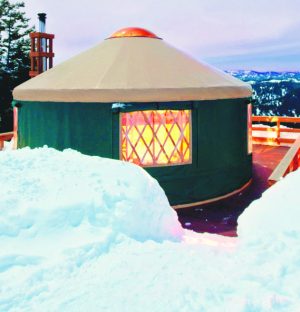October 24, 2008 – Salomon’s warm and cold skis, both skate and classic, have bases and ski molds designed for the characteristics of warm and cold snow. Warm is designated as -8C (17F) and warmer. Cold is designated as -5C (23) and colder.
Bases:
All Salomon ski bases are made with Ultra high molecular weight polyethylene (UHMWPE). Salomon’s Equipe 10 Warm bases have more surface area to absorb more warm snow wax, than the cold base that are denser to reduce cold dry snow friction. Each base’s exact properties are achieved by mixing various additives in various proportions to the UHMWPE. Two of the additives that Salomon specifies are Salomon’s proprietary Zeolite, as well as Carbon Black. Zeolite is a mineral used in many industries both as a sieve and as a sponge. Zeolite has a very regular structure that allows it to act as a sieve to keep out dirt particles over a certain size, while its ultra porous structure allows it to act like a sponge actively absorbing wax. Zeolite also maintains its uniform structure under extreme heat, allowing bases with Zeolite to be less prone to seal (close) when exposed to heat from waxing. Salomon’s warm bases have more Zeolite than the cold base. The warm bases also have more carbon black in them then cold bases. Carbon black (often wrongly called graphite) is used for its very high surface area to volume rati
The warm and cold bases also have specific structure for warm or cold snow crystals and moisture content. For extreme wet conditions you can press in a hand structure above the warm grind. In cold conditions below -12C we reduce the cold structure with a metal scraper. Equipe 9, 8 and JR racing skis use a universal base mixture and universal grind.
Ski Molds:
Not only are Salomon Warm and Cold bases different but so are the warm and cold ski molds.
Skate skis:
Equipe 10 Warm skate ski have glide zones specifically molded to reduce warm/wet snow suction. This is achieved by making he front glide zone shift rearward as the load is increased, essentially lifting the ski tip off of the wet snow to break suction.
Equipe 10 Cold skate skis have glide zones specifically designed to reduce cold/dry snow friction. This is achieved by having constant contact glide zones where pressure increases as load is increased to assist in rolling and melting the cold snow crystals. With constant glide zone (and edge) contact the cold ski a more forgiving (stable) ski than the warm ski.
Classic skis:
Cold ski is the hardwax ski. With a heel toe camber (kick zone) that floats close to the snow during glide it is designed for easy kick and full kick zone contact when waxed with multiple thin layers of hard wax as applied in cold conditions. Warm ski is for klister conditions. It’s heel toe camber rides higher off the snow (than the cold camber) to keep the thicker klister or soft hardwaxes (necessary for wet and ice snow) to remain off the snow during glide phase.
Try a pair of Salomon skis today and Enjoy Winter! For more information visit www.SalomonNordic.com or email the Saab Salomon Factory Team at WeAnswer@SkiPost.com
Top News Stories
Salomon’s 2009 Warm and Cold Ski Bases
release by SalomonLeave a Reply
You must be logged in to post a comment.






![National camp action [P]...](https://skitrax.com/wp-content/uploads/2019/08/Duluth-4-2019-08-08-at-10.46.51-AM-300x246.png)
![Matt Liebsch on the CXC Elite Team [P] CXC...](https://skitrax.com/wp-content/uploads/2019/08/Matt-Liebsch-CXC.2-525x700.4-300x267.jpg)
![Dan LaBlanc [P]...](https://skitrax.com/wp-content/uploads/2019/08/Dan-LaBlanc-img_1855.3.jpg)
